Five considerations for lighting control systems
- March 9, 2021
- Best Practices
- Lighting
Demystify lighting controls by asking the right questions
- Recognize the different lighting control systems.
- Know how to talk to clients about lighting controls.
- Understand how to document lighting controls for ease of installation.

With so many often-competing considerations, it is important to know at the onset of a project what questions to ask so the lighting system specified and ultimately installed meets the key drivers of the project. Below are five key considerations to set you up for success in designing a lighting control system for your project.
1. Know the code
A solid design always starts with a code review. It’s important to familiarize yourself with the applicable energy codes; the U.S. Department of Energy website is a great place to start. Take the time to understand the requirements at the national (e.g., ASHRAE Standard 90.1: Energy Standard for Buildings Except Low-Rise Residential Buildings or International Energy Conservation Code) and state level (e.g., California Title 24), then check any local municipality requirements, as they could be more stringent than state or national codes, particularly when it comes to light pollution (exterior/site lighting) and energy-saving measures.
Also, it is important to think about code with relation to the design period for the project. Is a new code going to be adopted within the year that would impact your design? Most jurisdictions require automatic shut-offs at a minimum so lights can be turned off when a space isn’t occupied, for example. Many jurisdictions also require daylight responsive controls to allow lights to be turned off, often automatically, when ample sunlight is available. Be prepared to communicate to your clients that the days of specifying simple toggle switches are already gone.
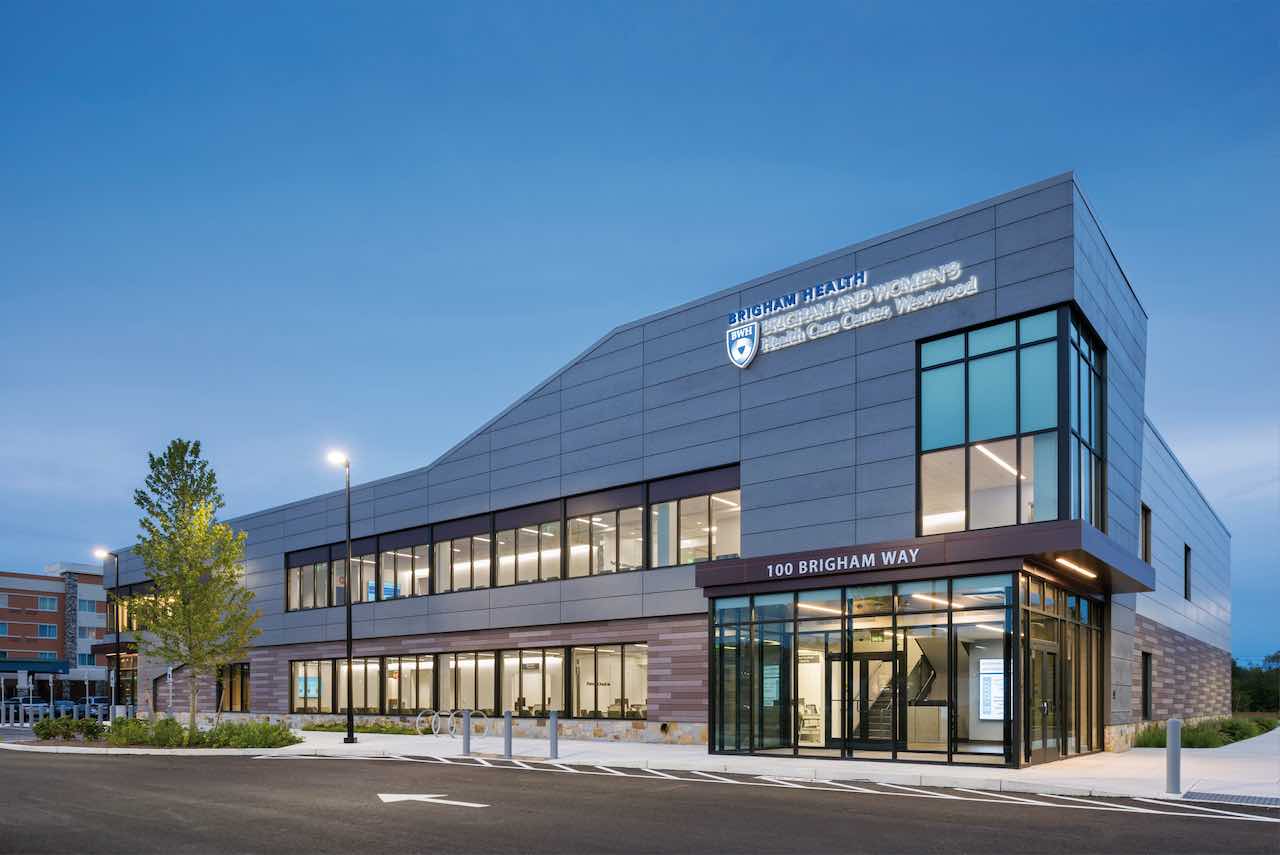 Figure 1: The health care building approach is shown from the Northwest, showing stacked lobby and waiting rooms perfect for daylighting. Courtesy: Anton Grassi, CannonDesign
Figure 1: The health care building approach is shown from the Northwest, showing stacked lobby and waiting rooms perfect for daylighting. Courtesy: Anton Grassi, CannonDesign
2. Talk with clients
Most clients are comfortable enough with LED technology that it is not as hard a sell as it was even five years ago. In addition to the significant energy savings, today’s LED luminaires cost virtually the same — in many cases less — than similar products using legacy lamp technologies. LED luminaires are also typically more readily stocked and available and their native dimming allows them to integrate seamlessly with energy codes required lighting controls like daylight harvesting.
Lighting controls, however, are a bit of a different story. Most clients can tell you a horror story or two about having to deal with a lighting control system that was overly complicated or didn’t give them the functionality that they actually wanted despite having all the bells and whistles.
The reality is that with today’s technological advancements, a lighting control system can provide a client the moon and stars, it can provide maximum flexibility and it can deliver output data for analysis. It can control mechanical systems, shades and respond immediately to changes in power grid availability and demand.
Beyond building engineering systems functionality, it can tie into room scheduling software, help guide a user in a space, even make suggestions to decrease population density in times of COVID-19, but the old adage stands: “Just because you can, doesn’t mean you should.” This is true, at least not without careful design thinking. The good news is that many manufacturers have gotten the message from end users and are now creating products that respond to concerns of overcomplicating control system designs.
Conversations with the client, the users and those responsible for maintenance should happen early enough in the design process to take advantage of their input and again after the system is designed to ensure their needs are met. These early conversations should address how the systems need to function and the latter should cover how they need to be programmed and commissioned, as well as maintained, to ensure continued success.
On-site factory training by the control system manufacturer is often a useful addition to the lighting controls specification and gives the end users and those maintaining the system a firsthand opportunity to familiarize themselves with the features and functionality. It is also beneficial to have this training recorded for reference or when onboarding a new employee. This can be invaluable down the road if the system has an issue and requires maintenance.
Rather than bypassing the lighting control system, familiarity with the system and how to troubleshoot issues can empower facilities staff and operations team to capitalize on the full value of their system. At the end of the day, successful lighting systems are paired with control systems that find the right balance between optimization and intuitiveness for the end user.
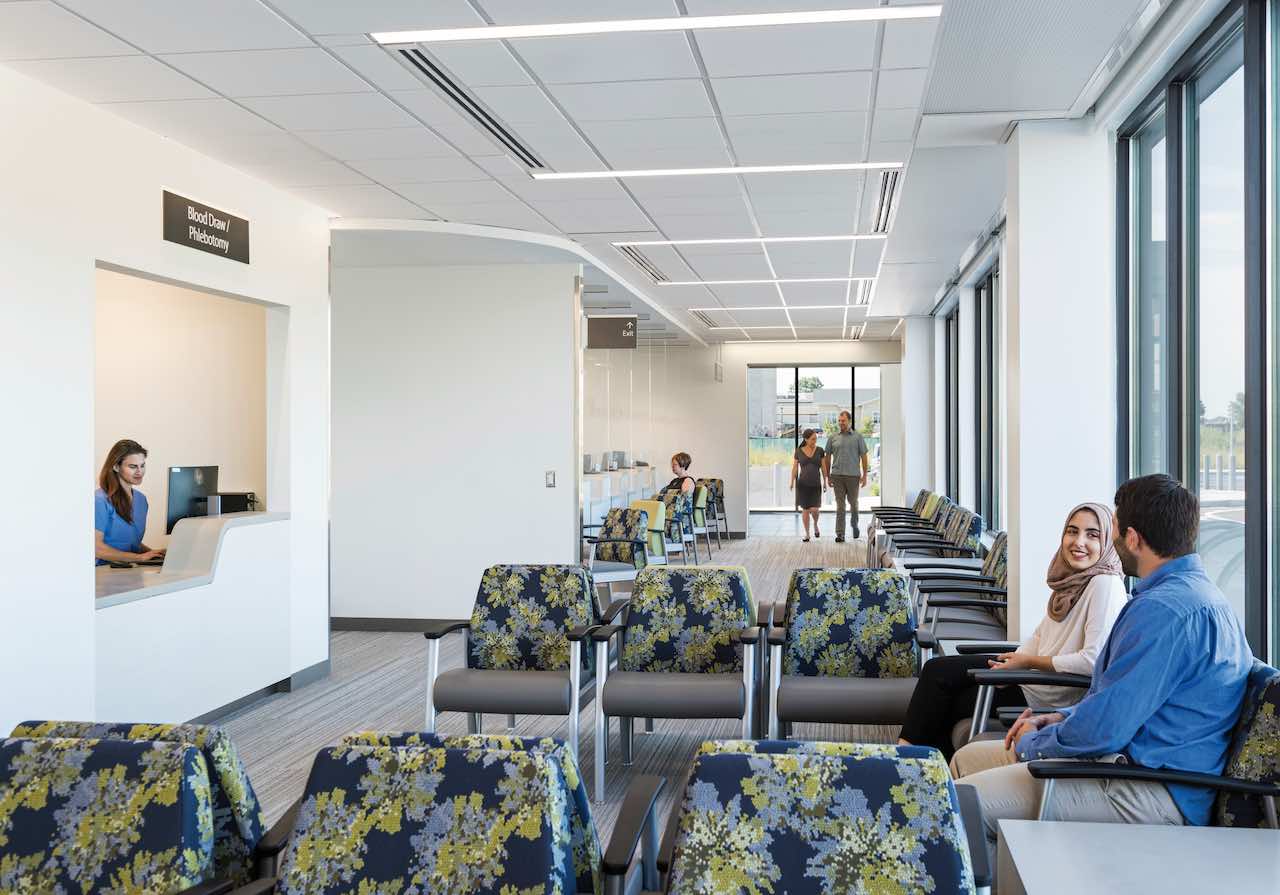 Figure 2: While overridden for the photograph, the use of daylight-harvesting solutions hits multiple targets: reduced fixture counts, lower energy use and support of an architectural “openness,” reinforcing the cheery, neighborhood-focused brand revitalization. Courtesy: Anton Grassi, CannonDesign
Figure 2: While overridden for the photograph, the use of daylight-harvesting solutions hits multiple targets: reduced fixture counts, lower energy use and support of an architectural “openness,” reinforcing the cheery, neighborhood-focused brand revitalization. Courtesy: Anton Grassi, CannonDesign
3. Understand different lighting control system
The good news is that many manufacturers have gotten the message from the end users and are now creating products that respond to the concern of overcomplicating control system designs. Today’s lighting control systems can be broadly separated into two main categories: wired and wireless systems.
Wired controls, as they sound, are hard-wired systems connecting the control devices and luminaires. These can use line voltage control devices, typically reserved for spaces which are exempt from automatic shut off code requirements, or low-voltage wiring. Low-voltage controls are commonly used to achieve today’s code-mandated code requirements and employ a wired approach where power is provided to the luminaire and to the switching/control device, but the control communication wires between the switch/control device and the luminaires are low voltage. In many cases, this means the control wires can be run without conduit, which saves on labor and installation costs.
“Plug and play” distributed lighting control systems, which typically use ethernet-style cabling, further simplify these systems. These systems hard-wire a “room controller” device that acts the brain for the space and then use the data cabling to connect the spaces devices (switches, dimmers, presence and daylight sensors) and send control information to the spaces’ connected lighting. In addition to reduced installation costs up front, these types of systems also allow for simplified space reconfigurations or reprogramming of control sequences.
LED control options for dimming require coordination in any control system, but with these room-controller-based configurations it is particularly important to ensure that the dimming protocol of the fixture controlled by the system is matched with the controller. Most control systems offer the suite of 0 to 10 volts, electronic low-voltage and forward-phase dimming that are the most common protocols used by LED fixture manufacturers.
These systems aren’t quite at a place where they can easily integrate digital multiplex and color changing lighting applications, but as fixtures equipped with circadian shift and correlated color temperature tuning become more prevalent on the market, new solutions for control integration are emerging to enhance these systems, as well.
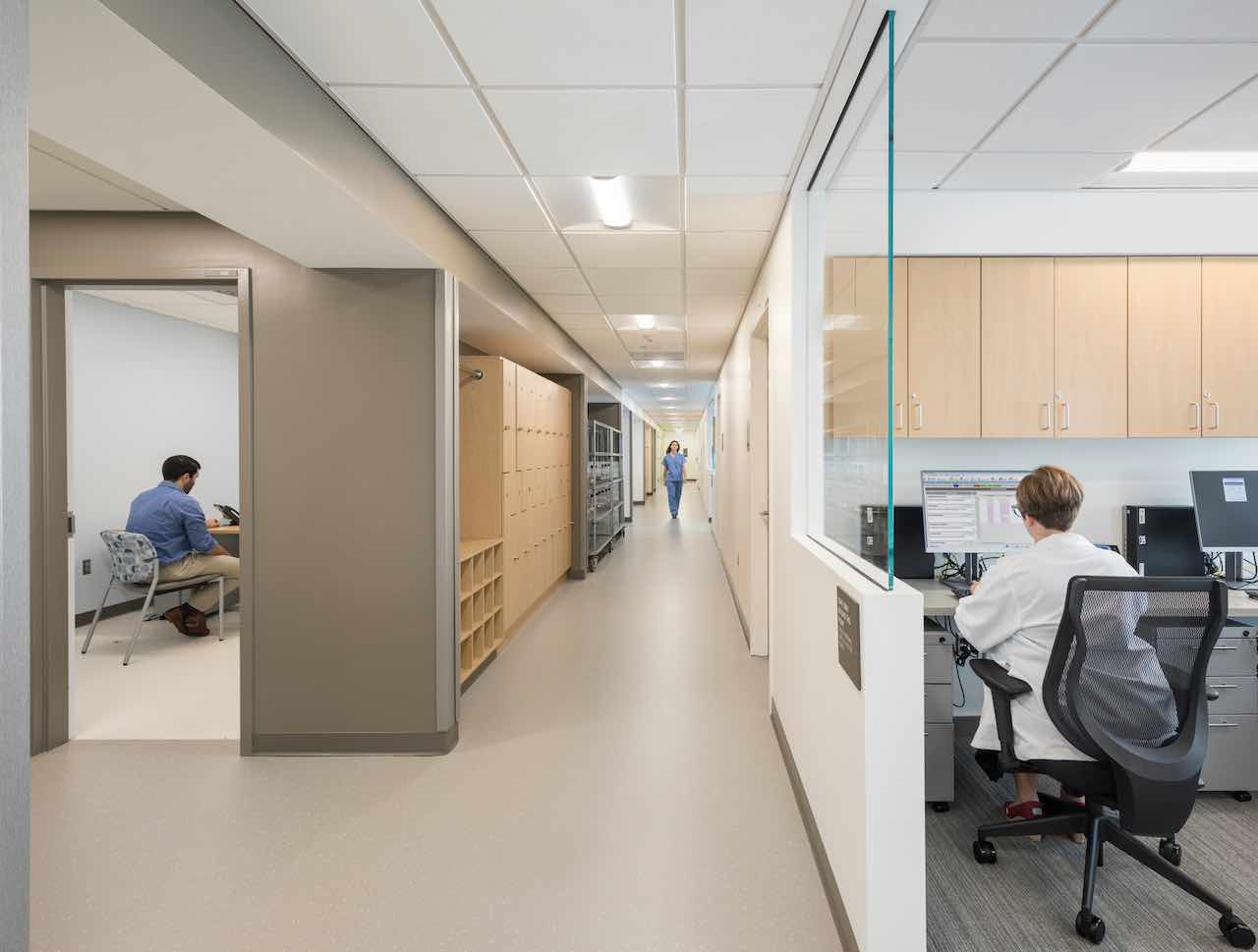 Figure 3: The client’s interest in exploring “internet of things” technology and controls integration led to the prolific use of luminaires equipped with onboard sensors and network-ready connectivity in corridors, patient rooms and workspaces. Courtesy: Anton Grassi, CannonDesign
Figure 3: The client’s interest in exploring “internet of things” technology and controls integration led to the prolific use of luminaires equipped with onboard sensors and network-ready connectivity in corridors, patient rooms and workspaces. Courtesy: Anton Grassi, CannonDesign
Wireless lighting control systems are another example of system simplification. In these systems, luminaires are powered normally, but instead of hard-wired controls, they communicate through a wireless signal via sensors, control stations and a central processor. Wireless control systems are great for renovations and existing buildings where running hard-wired connections would be cost prohibitive. There is also a use in new construction, capitalizing on the same labor savings.
In addition to the installation savings involved with wireless systems, the lack of hard wiring allows for easy reconfiguration, offering clients future-proofing flexibility — another hot topic in the face of a global pandemic like COVID-19.
There have been concerns raised about the security of wireless lighting systems and their ability to be used to access larger building systems for which they can tie into. Most manufacturers stand behind the security protocols put in place in their systems; however, a common recommendation is to keep the system closed off from the internet via a firewall. There can be additional maintenance required, which is important for the client to be made aware of before choosing this control system as many wireless devices require batteries, with varying lifespans of 5 to 10 years.
A recent innovation that really streamlines the specification process is onboard lighting controls. Instead of layering a control system onto a lighting plan to control the lighting system — the traditional way these systems have been designed — each fixture has its own presence sensor, which can be programmed to occupancy or vacancy mode depending on the application, as well as its own photosensor. This type of system offers granular control for maximum controllability and the deepest possible energy savings, but fixtures can also be grouped together in a zonal control approach.
This is useful when individual fixtures adjusting in real time could be distracting, such as in an open office on a partially cloudy day or when activity in part of a zone wants to trigger the rest of a zone, such as in a corridor where occupancy is detected at one end and the section of corridor wants to energize to provide clear and safe-feeling wayfinding.
At the moment, the variety of fixture types with onboard sensors are somewhat limited and the systems are often designed to work within fixture types in manufacturer families, but not necessarily across manufacturer types, although there are some original equipment manufacturer solutions that are an exception and we are seeing more and more options appearing in the market.
There are also limitations to this system in terms of quantity of zones and how they are controlled, so at the moment spaces which require preset dimming scenes and more complex color-changing RGBW+/digital multiplex solutions still need a more robust control solution such as a separate scene controlling station.
4. Document the intent
Once the appropriate control system is selected — even a hybrid approach — another key step to success is developing a clear sequence of operations, which describes the lighting control system functionality in detail. A step-by-step, timeline approach to each required control scenarios written in plain English is a critical document to bringing the design of the system to realization.
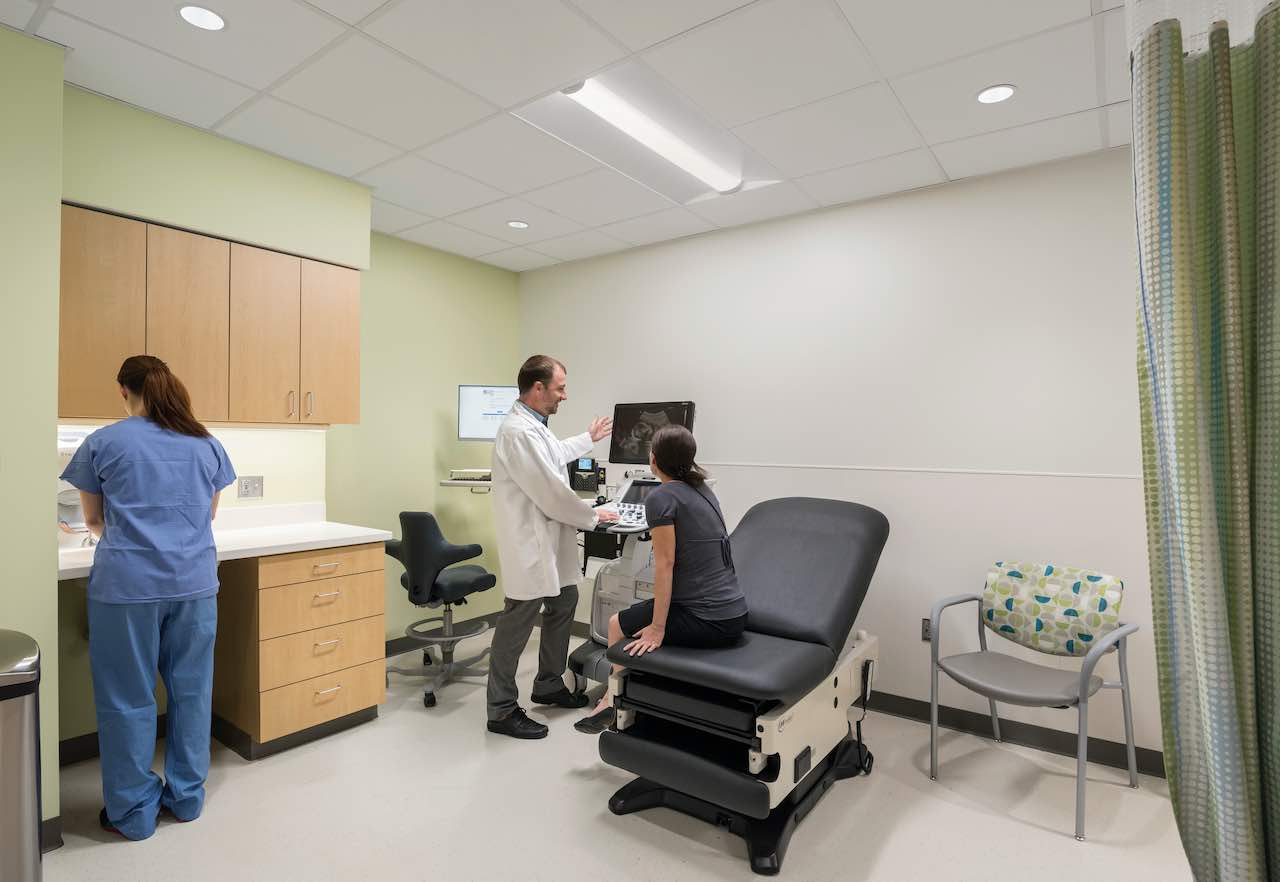 Figure 4: In patient care areas, dimmable and zoned high-quality lighting sources are controlled separately, enabling flexibility to provide different functional illuminances to suit various tasks. Courtesy: Anton Grassi, CannonDesign
Figure 4: In patient care areas, dimmable and zoned high-quality lighting sources are controlled separately, enabling flexibility to provide different functional illuminances to suit various tasks. Courtesy: Anton Grassi, CannonDesign
A good sequence of operations includes chronological instructions describing how the system is to function as different actions (such as a press of a button on a wall station) or time events (such as sunrise, sunset, close of business, start of business, maintenance sweep, security sweep, etc.) occur. The sequence of operations dictates which events take precedence over others (for example, a special lighting scene for a holiday) or when special events, such as a fire alarm trigger or a loss of normal power, override the system to provide emergency functionality. A clear sequence of operations provides a valuable tool to communicate the intent of the design to multiple parties; it allows the designer to describe in sufficient detail the functionality of the system to communicate with clients and end user groups to ensure their needs are met. It also communicates the required functionality of the system to the control system manufacturer, any estimators quoting the system, the team of installers, which often involves a low-voltage systems contractor in addition to the electrical contractor for many modern lighting control systems, and ultimately the programming technician and training team.
A well-written sequence of operations can also be an important tool for successful review of a project seeking U.S. Green Building Council LEED certification, International WELL Building Institute WELL certification or other third-party certifications that require a detailed understanding of specific control functionality to be awarded points or credits.
Setpoints are another element of information included in good sequence of operations. When describing spaces that have occupancy or vacancy sensors, describe exactly what the intended timeout period will be. Most manufacturers’ products come out of the box with a factory default set to 10 or 20 minutes; however, code often allows up to 30 minutes before shut-off. While a short timeout period of five minutes of inactivity or less would be perfectly appropriate for setpoint in a supply closet, the same short timeout in a science lab might be a nuisance and the code allowed maximum may be the better solution in that space type. Configuring specific setpoints based on the tasks, users and activity profiles of an area allows the potential for maximum energy savings.
5. Commissioning
Programming and commissioning of systems are often performed by a third party, and is sometimes not performed at all. When these “critical path” steps are skipped in the turnover process, much of the energy-saving functionality and flexibility of the intended system never comes to fruition.
Commissioning of lighting systems should be included in the specification manual for a project with startup and functional checklists. For programming, the key to a smooth process is to have as much of the functionality ironed out in the sequence of operations and included in the drawing set or accompanying specifications. Omission of the sequence of operations from the drawing set altogether or even key pieces of information like missing timeout setpoint need to be addressed before the building is commissioned and turned over for the building to function as intended.
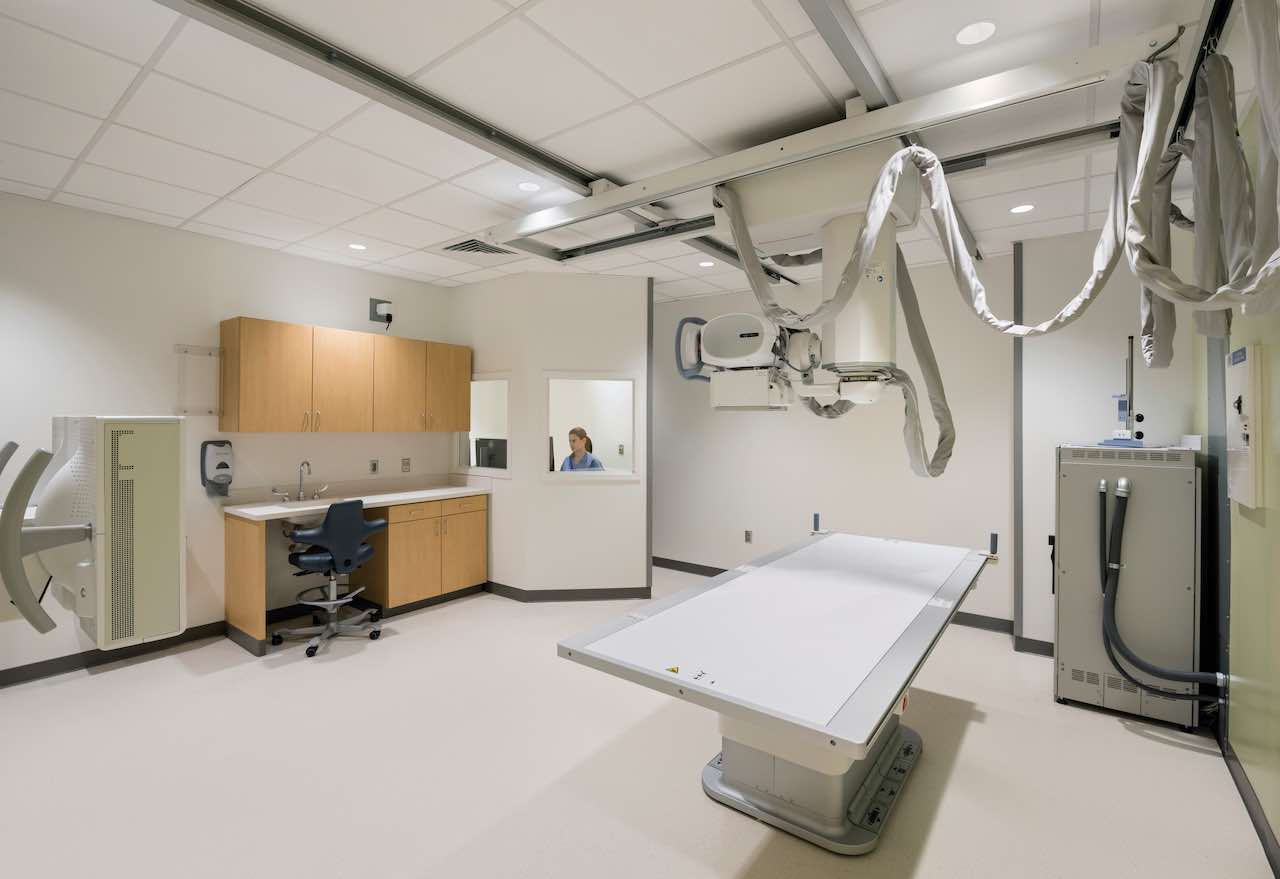 Figure 5: Scarcity of lighting financial support made multipronged solutions important. Procedural room downlights equipped with 1% dimming prioritize patient comfort, while delivering appropriate setup and cleaning lighting levels. Courtesy: Anton Grassi, CannonDesign
Figure 5: Scarcity of lighting financial support made multipronged solutions important. Procedural room downlights equipped with 1% dimming prioritize patient comfort, while delivering appropriate setup and cleaning lighting levels. Courtesy: Anton Grassi, CannonDesign
Another key piece of information often left off the sequence of operations is the target illuminance levels for each space’s daylight sensor calibration. An example: A daylight sensor would only need to sense 10 to 15 footcandles at the floor of daylight contribution in a circulation space to start to dim/switch off the lights connected to that sensor. But in a classroom that daylight setpoint would want to be 30 to 40 footcandles at the work plane (desk height, instead of the floor) before the electric lights start to respond to daylight. Daylight setpoints matched with illuminance level targets and clearly outlined in the sequence of operations, again allow optimization of the energy consumption of the lighting system after the system is properly commissioned.
Commissioning of the building’s systems is not limited to lighting controls and often the lighting controls act as a trigger to activate or deactivate other building systems. A common example is occupancy sensors triggering heating, ventilation and air conditioning systems in a space. In this scenario, the occupancy sensor needs to be specified with a second set of contact closures to not only send a signal to the lighting fixtures to turn off when the space is unoccupied, but to also send a signal to the HVAC system to similarly stop supplying cooling/heating to the now unoccupied space.
Integration of these systems can save on device counts and installation costs, but it needs to be clear in the drawing set and the sequence of operations that that occupancy sensor will be pulling double duty and needs to be installed equipped with that functionality.
Once the system is installed, commissioned and fully operational, training and ongoing commissioning ensure continued success for life of the system. On-site training is offered as a service by many manufacturers and time allowances included in the specification of the lighting and control system should account for enough time to meet with the myriad groups that may need to interface with the system. This may include different user groups, especially when spaces are designed for multiuse flexibility, as well as facilities and maintenance personnel.
Ongoing system commissioning is the final piece that ensures the design will stand the test of time. Proper communication between devices and calibration of device setpoints should be regularly checked to confirm that the functionality of the system and the energy savings intended are being realized. Monthly system checks are recommended to guarantee the most granular energy savings — the earlier an issue is detected, the more impact the resolution can bring.
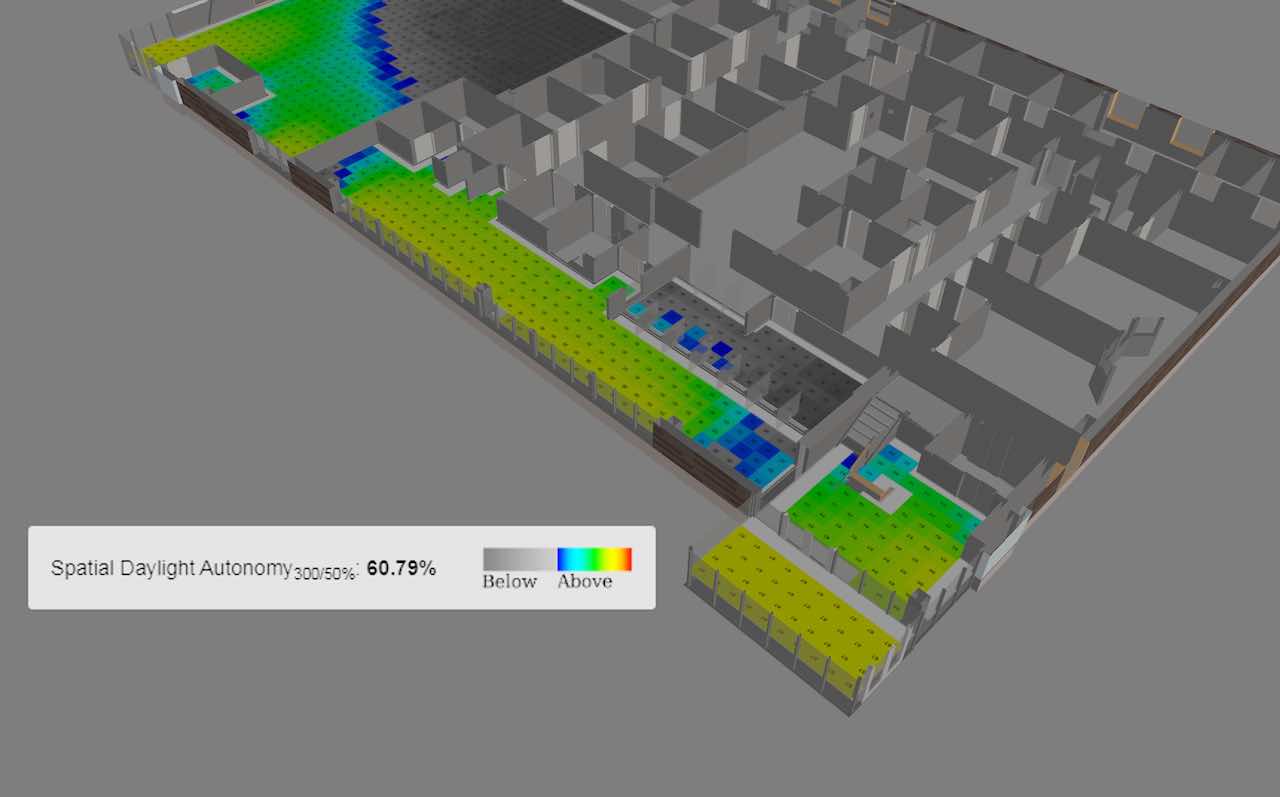 Figure 6: A spatial daylight autonomy study using Lightstanza modeling software shows maximum daylighting impact from the northwest-facing lobby and waiting spaces. Courtesy: CannonDesign
Figure 6: A spatial daylight autonomy study using Lightstanza modeling software shows maximum daylighting impact from the northwest-facing lobby and waiting spaces. Courtesy: CannonDesign
As technology improves, more of the ongoing commissioning is becoming digital and automatized. Today’s networked lighting control systems able to be configured to communicate issues digitally and in real time, by sending alerts to an operational dashboard or even directly to the operator via email or text message.
With attention to potential design issues and careful coordination between stakeholders and the implementation and installing team, clients can see the true power of a well-integrated design.